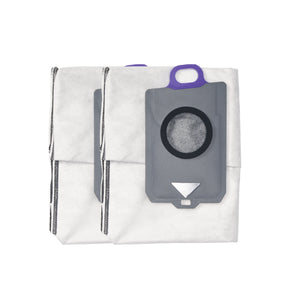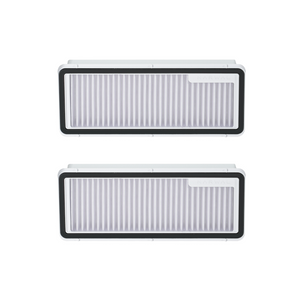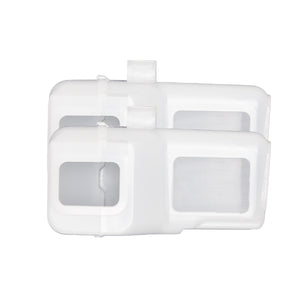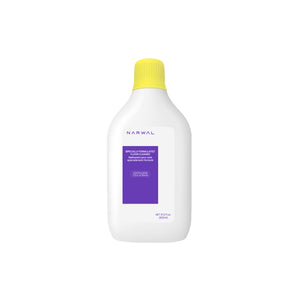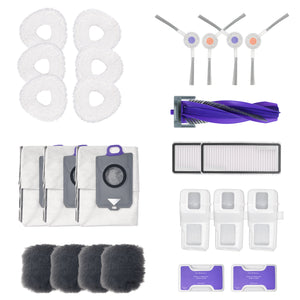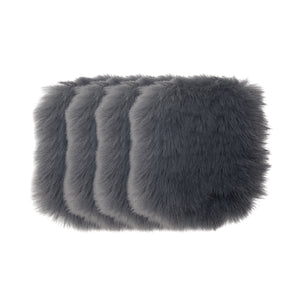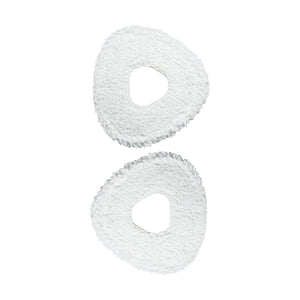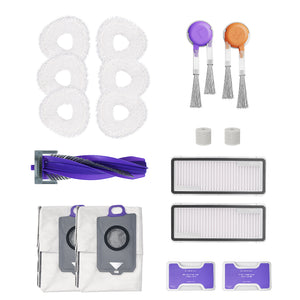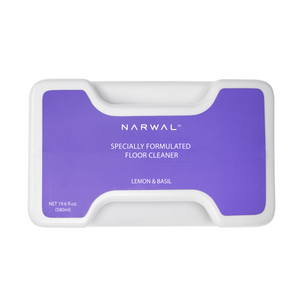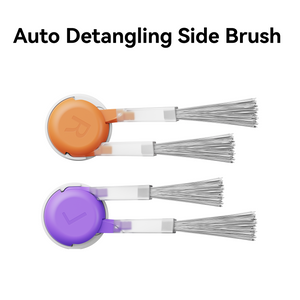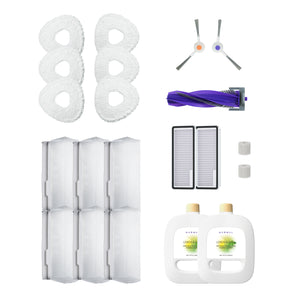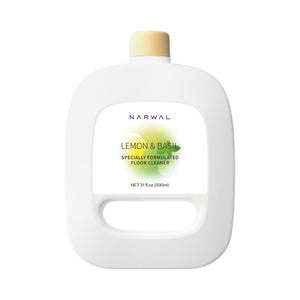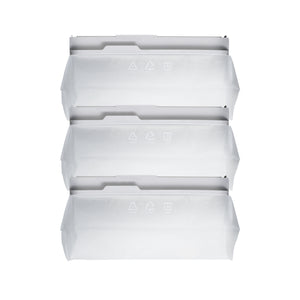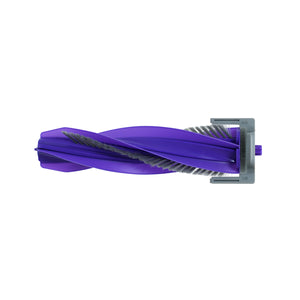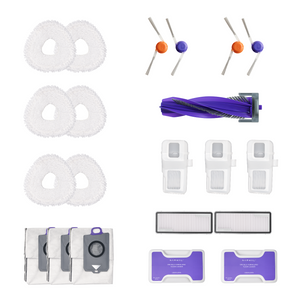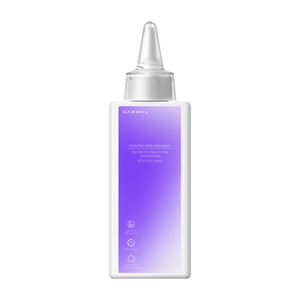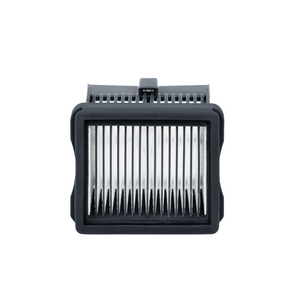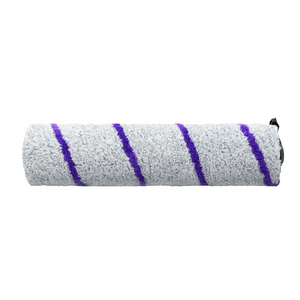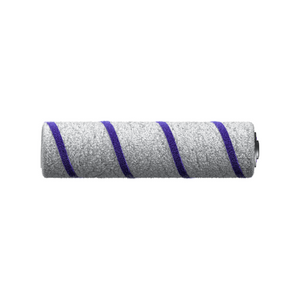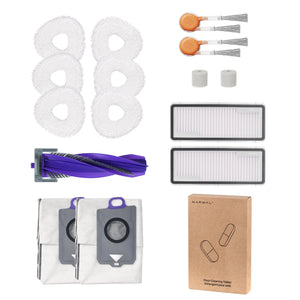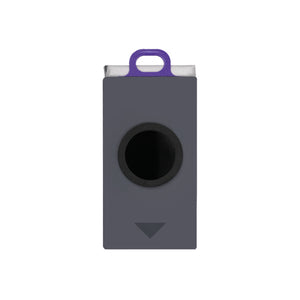No, modern robot vacuums rarely scratch floors when used correctly. The risk only appears when grit, sand, or small stones get trapped under the wheels or brushes. Many homeowners worry about scratches, especially on hardwood and vinyl, but most new models are built to prevent them with soft wheels, gentle rollers, and smart sensors that protect delicate surfaces.
In this guide, you’ll learn why robot vacuums scratch floors far less than people think, what causes marks when they do happen, and how to prevent them. We’ll also share expert tips, real user experiences, and highlight advanced models—like Narwal Flow and Freo X Ultra—designed for deep, safe cleaning without leaving a trace.
Why Robot Vacuums Scratch Floors
Scratches on floors usually happen when grit, sand, or small debris gets trapped under a robot vacuum’s wheels or brushes. As the machine moves, these particles can drag across the surface—especially on delicate materials like hardwood or vinyl—leaving faint marks or dull spots over time.
Hard plastic wheels may also cause light scuffs if they roll over debris, while stiff bristles or tangled hair in the brush head can increase friction and wear down the floor’s protective layer. These problems are most common in older or poorly maintained models.
How Modern Robot Vacuums Prevent Surface Wear
Modern robot vacuums protect your floors through smart design and gentle cleaning technology, not brute force. Their goal is to clean efficiently while minimizing contact and friction that could dull or mark your floor’s surface.
Most new models use soft rubber wheels and brushless or rubber rollers that glide smoothly over hardwood, vinyl, and tile. These materials reduce friction and prevent scuffs, helping the robot maintain a consistent and gentle touch on every surface.
To keep small debris from causing wear, advanced robots feature sealed airflow systems and smart debris management, preventing sand or grit from getting caught under the wheels or brushes. This is paired with intelligent navigation — LiDAR or AI cameras map each room, helping the robot avoid bumping into walls or furniture while adjusting pressure to suit the floor type.
Some models even let you fine-tune their performance. Adjustable cleaning modes adapt suction power and mop dampness for different floor types, ensuring just the right balance between cleaning strength and surface safety. Virtual no-go zones add an extra layer of control, keeping the robot away from sensitive flooring or valuable items.
Together, these technologies make modern robot vacuums more than just cleaning tools — they’re surface protection systems, designed to preserve your floor’s finish while keeping your home spotless.

Do Robot Vacuums Scratch Different Types of Floors?
Not all floors react the same way to a robot vacuum. Materials like hardwood, vinyl, and tile each have unique surfaces and protective layers, so the potential for marks or dulling varies slightly. Here’s how to keep each type safe.
Hardwood Floors
Scratches on hardwood floors almost always come from grit or sand, not the vacuum itself. When debris gets caught under the wheels or brushes, it can drag across the surface. Modern models with soft rubber wheels and gentle rollers are safe when maintained properly. Premium robots like Narwal Flow and Freo X Ultra add adaptive pressure control and mop lifting, offering deep cleaning while protecting delicate wood finishes.
Vinyl Floors
Luxury vinyl plank (LVP) is more resistant to wear but can still dull if small stones or glass fragments are pushed across the surface. The key is prevention: keep the floor clear of debris and wipe wheels frequently. Robot vacuums built with rubber contact points and sealed airflow systems clean vinyl effectively without scratching or streaking.
Tile and Laminate Floors
These surfaces are the least likely to scratch, though laminate can warp if exposed to too much moisture. Using a robot vacuum with adjustable water control and mop-lifting technology prevents both scuffs and damp spots. Models like Narwal Flow, with 12mm mop lifting and edge-to-edge cleaning, are ideal for keeping tile grout clean without leaving water residue.
Hardwood requires the most care, vinyl offers the best balance between strength and flexibility, and tile or laminate are naturally durable. Choosing a robot vacuum that adjusts its cleaning pressure, controls moisture, and uses soft contact materials ensures safe and gentle cleaning for every type of floor.
How to Prevent Floor Scratches from Robot Vacuums
Even though robot vacuums rarely scratch floors, a few simple habits can keep your floors looking spotless for years. The key is consistent care—before, during, and after each cleaning cycle.
1. Clear the Floor Before Cleaning
Always remove small debris such as sand, gravel, or metal pieces before running your robot vacuum. These particles can get caught in the wheels and act like sandpaper. Picking up loose wires, toys, or shoes also helps the robot move smoothly and prevents unnecessary friction.
2. Use Smart Cleaning Settings
Take advantage of no-go zones or virtual boundaries in your app to protect delicate areas. Start with moderate suction on smooth floors and observe your robot’s first few runs to make sure it navigates correctly. Adjust furniture placement or barriers if it bumps or drags objects—small tweaks go a long way in preventing marks.
3. Keep the Robot Well-Maintained
Clean the wheels, brushes, and mop pads regularly to remove trapped dust and hair. Built-up debris is the most common cause of light scuffs or dulling. Check that brushes spin freely and replace them when worn—this keeps both the vacuum and your floors in top condition.
4. Choose Quality Over Cost
High-quality models are designed for gentle floor protection. They use soft rubber wheels, adaptive cleaning pressure, and precise navigation to prevent wear. Premium robots like Narwal Freo X Ultra and Narwal Flow combine mop-lifting systems with self-cleaning pads, ensuring your hardwood and vinyl stay smooth and scratch-free.
What Real Users Say About Robot Vacuums and Floor Scratches
Many users who once worried that robot vacuums might scratch floors now report the opposite—modern models actually help keep surfaces smoother and cleaner over time. In community reviews and forums, most homeowners agree that the risk of scratches has far more to do with preparation and product quality than with robot vacuums themselves.
On Reddit, for example, a few users noted that budget models sometimes dragged sand or grit across hardwood floors, leaving light marks near entryways. But in contrast, Amazon reviewers of Narwal Flow and Freo X Ultra consistently highlight how features like mop-lifting systems, soft rubber wheels, and adaptive cleaning pressure protect delicate hardwood and vinyl. Many mention months of daily use with no visible wear, even on polished wood surfaces.
Across discussions, the consensus is clear: robot vacuums don’t scratch floors when they’re well designed and well maintained. Cheap or neglected units cause most issues, while high-quality models—especially those made for mixed flooring—deliver safe, quiet, and consistent cleaning that keeps floors looking new.

Safest Robot Vacuums for Hardwood and Vinyl Floors
Choosing the right robot vacuum is the easiest way to prevent scratches and keep floors spotless. Below is a quick comparison of the safest, most trusted models based on floor protection, cleaning performance, and user feedback.
|
Model |
Floor Protection Features |
Ideal Use |
|
Rubber wheels, self-cleaning pads, adaptive suction; AI obstacle avoidance; CarpetFocus technology |
Premium homes with mixed flooring or hardwood |
|
|
Adaptive cleaning pressure, tangle-free brushes, automatic mop washing and drying |
Homes with hardwood floors and pets |
|
|
Dual RGB cameras, AI debris detection, 12,000Pa suction, 180 RPM mop scrubbing |
Smart homes needing deep cleaning with surface protection |
|
|
Roborock S8 Pro Ultra |
Sonic mopping, mop-lifting system, strong mapping |
Mixed surfaces; great overall, but less advanced protection than Narwal Flow |
|
iRobot Roomba j7+ Combo |
Dual rubber rollers, PrecisionVision navigation, auto-empty base |
Vinyl or wood homes that prefer dry vacuuming only |
All these models deliver reliable cleaning with minimal risk of surface wear, but Narwal’s Flow and Freo X Ultra stand out for their gentle cleaning systems and advanced floor protection technology. For homes with delicate hardwood or luxury vinyl, they provide the safest, most effortless cleaning experience.
[cta:flow-robot-vacuum-and-mop]
[cta:narwal-freo-z-ultra-robot-vacuum-mop]
[cta:narwal-freo-x-ultra-robot-vacuum-mop]

Keep Your Floors Safe — the Smart, Gentle Way
Gentle design matters more than raw power. With soft wheels, smart navigation, and precise moisture control, modern robot vacuums can keep your hardwood, vinyl, and tile floors spotless—without the risk of scratches or surface wear.
At Narwal, every feature is built with floor protection in mind. From FlowWash real-time mop cleaning in the Narwal Flow to the adaptive pressure system in the Freo X Ultra, each model combines deep cleaning with delicate care. The result is a smarter, quieter clean that protects what matters most—your floors.
With the right design and thoughtful engineering, robot vacuums don’t just clean—they care. Narwal’s technology lets you enjoy the beauty of your floors for years to come, without worrying whether robot vacuums scratch floors.

FAQs
How often should the robot vacuum be maintained to prevent floor scratches?
Maintain your robot vacuum weekly, focusing on cleaning the wheels and brushes to remove debris and prevent floor scratches.
What features should I consider in a robot vacuum to avoid damaging my floors?
Opt for a robot vacuum with soft brushes, rubber wheels, and advanced navigation sensors to protect your floors from damage.
When is the optimal time to run a robot vacuum?
The best time to use a robot vacuum is during the day when you’re not at home. This allows the vacuum to clean efficiently without disturbing your activities.
Why does my robot vacuum leave scratches on the floor?
Scratches usually come from debris like sand, stones, or small objects being dragged by the wheels or brushes. Keeping floors clear before cleaning and maintaining the vacuum parts prevents this.
Can I run my robot vacuum every day?
Yes. Daily use is safe for most models and helps prevent dirt buildup. Just make sure the vacuum and its brushes are well maintained.
How long can a robot vacuum last?
Most robot vacuums last 4–6 years with regular maintenance. Battery replacement may be needed after 2–3 years.
Is a robot mop safe for vinyl plank flooring?
Yes, as long as it uses soft wheels and non-abrasive mops. Vinyl plank is durable, but avoid harsh cleaners or too much water.
Can robot vacuums switch from hardwood to carpet automatically?
Yes. Many models detect surface changes and adjust suction or lift mops when moving from wood floors to carpet.
Are robot vacuums effective for pet hair?
Yes, especially higher-end models with tangle-free brushes. They reduce buildup and protect floors from scratches caused by trapped hair.
What cleaning solution should I use in a robot vacuum mop?
Always use the brand-approved cleaning solution or plain water. Harsh chemicals, vinegar, or soap may damage the system or leave residue.





















